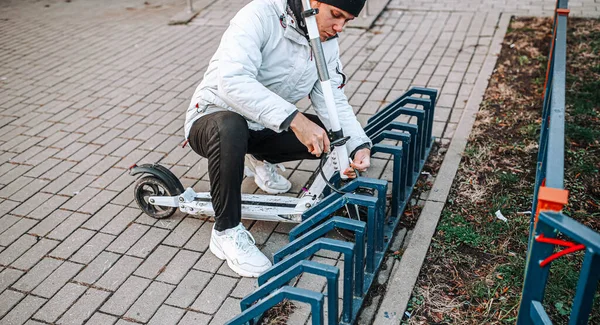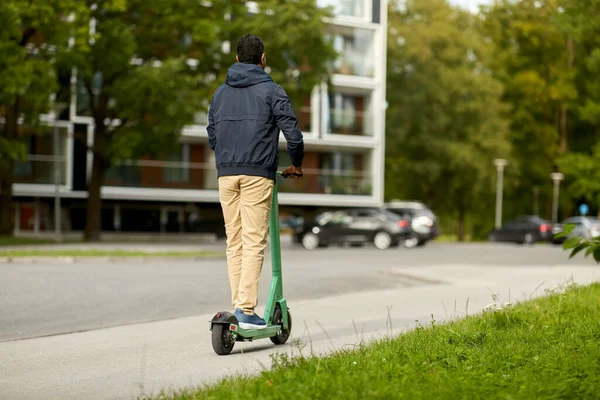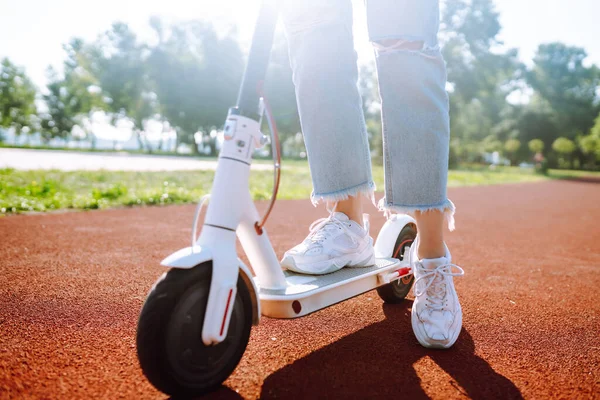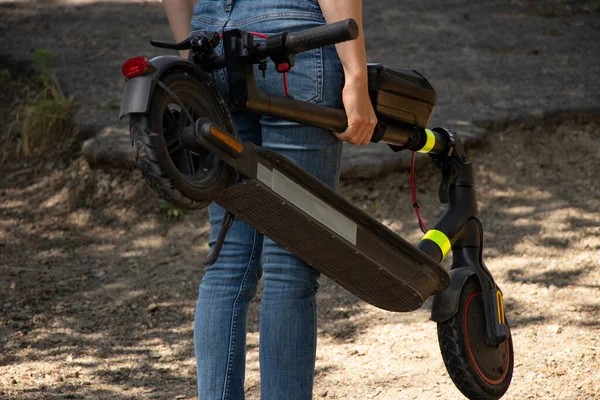The Essential Scooter Maintenance Schedule Guide: Keeping Your Ride Smooth
Maintaining your scooter is not just about ensuring its longevity, but also about enhancing your safety and riding experience. To aid in this, our guide dives into a comprehensive yet concise breakdown of tasks, tailored for various intervals - daily, weekly, monthly, and seasonally.
From the simple daily inspection of lights and horns to the more in-depth monthly examination of your scooter's engine performance and lubrication, every aspect is covered.

In addition to these, we'll explore the importance of keeping an eye on wear and tear of parts like brake pads and tires, and the often overlooked but crucial aspects such as the alignment of wheels and the condition of suspension components. This guide also provides insights on seasonal maintenance tips to prepare your scooter for the changing weather conditions, ensuring optimal performance throughout the year.
You're not just keeping your scooter in top condition, but also proactively preventing potential issues, saving yourself from future costly repairs. This guide is an invaluable tool for every scooter owner, from the daily commuter to the weekend enthusiast, helping you enjoy a reliable and enjoyable ride every time.
Decoding the Scooter Maintenance Schedule

Similar to your car’s spark plug, maintaining a regular service schedule for your scooter is beneficial. Sticking to it helps get rid of dirt and dust that can interfere with how it runs and make annoying sounds, not to mention preventing rust from forming due to mud and moisture.
Adjusting your maintenance routine according to weather conditions is particularly essential, as extreme temperature, rain, or snow can affect different parts of your scooter.
Daily Duties: Pre-Ride Checklist
Performing a few quick checks before hitting the road is vital. These daily duties include inspecting the tires and wheels for damage and ensuring they are at the right pressure, usually around 40 to 50 PSI for most electric scooters. Using a tire pressure gauge can help you accurately measure the pressure levels.
Another daily check that should not be overlooked is the brakes. Here are the steps to follow:
-
Inspect the clutch cable for wear and operation.
-
Check the brake lever and front brake system for proper functioning.
-
Confirm that the brake fluid levels are sufficient.
Weekly Once-Overs
Testing the bell, lights, and indicators weekly will help maintain your scooter’s safety. This also includes checking the throttle, horn, turn signals, and brake cables.
Don’t forget to lubricate all the metal parts that move like the folding joints and the front and rear suspension. This helps everything keep working smoothly and reduces wear over time.
Monthly Must-Do's
Performing monthly checks on your scooter is essential to maintain its peak performance, responsive brakes, and efficient battery usage. One of the tasks to perform on a monthly basis is checking the brakes. You’d start by loosening the mounting bolts on the caliper, then inspect the brake pads or shoes for wear and damage, and replace them if necessary.
Also, check the battery terminals and connections for signs of corrosion or damage every month. Ensure that all cables are securely attached to the battery, and clean the contacts regularly to prevent dirt and corrosion from affecting the scooter’s performance.
When it comes to tightening the nuts and bolts on your scooter, loosen the axle nuts a bit, adjust the tensioner bolts to set the chain tension, and finally, make sure to tighten the axle nuts securely. For the handlebars, tighten each bolt alternately until they’re all evenly tightened, ensuring stable scooter handlebars.
Seasonal Scooter Care Routines

As the seasons change, so should your scooter care routine. In winter, the cold can affect your battery efficiency and reduce your scooter’s range. Tires can react differently to temperature changes, making regular checks, especially of your tire pressure, vital.
Spring Start-Up
As spring arrives and it’s time to take your scooter out of storage, doing a few things can ensure it’s road-ready. Start by checking and maintaining the battery regularly, and replace it if necessary.
Next, check the brake fluid and oil levels, making sure there are no leaks, and top off or replace the fluids if needed. Then, inspect your tires for any signs of aging, deformations, cracks, or visible damage. If the tread depth is less than 2mm, it’s time for new tires.
Winter Wind-Down

When winter approaches and it’s time to store your scooter, fill the tank and add fuel stabilizer, store the battery properly, clean it thoroughly, and ensure the tires are inflated.
Before you put your scooter away, give it a good cleaning to get rid of any dirt and debris. Use a damp cloth or sponge to really get into those grimy areas and prevent any corrosion or damage.
Also, take care of your scooter’s battery by storing it in a cool, dry place, fully charging it before storage, and checking and recharging it as needed from time to time.
Protect your scooter from rust during winter storage by:
-
Applying wax to exposed parts
-
Using anti-corrosion products on bare metal
-
Keeping the fuel tank full to prevent inner rust
-
Covering it with a high-quality scooter cover.
Milestone Maintenance Moments
Certain milestones in your scooter’s life require special attention, such as the first 500 miles and every thousand miles after that. The break-in service for a new scooter is vital as it enables the components to get polished smooth and broken in, which helps reduce friction, improve sealing, and ensure good power and fuel economy.
First 500 Miles: The Break-In Service

During the first 500 miles, it’s best to slowly increase your speed and then get another oil change, including an oil filter and oil pump check, at 500 miles. Also, remember to use regular non-synthetic oil for the first 500 miles.
Before you start riding, be sure to give the engine, including the cylinder head, about a minute to warm up. This helps the oil circulate properly, and it is crucial for breaking in a scooter. Additionally, ensure that the oil pump is functioning correctly to maintain proper lubrication.
Every Thousand Miles: Regular Revamps
Upon every thousand miles traveled, it’s necessary to carry out specific maintenance tasks. This includes changing the engine and transmission oil, checking and replacing the air filter, inspecting the brake pads, and ensuring the engine coolant is at the appropriate level.
Don’t forget to also check the engine oil level, tire pressure, lights, horn, and oil filter. For non-sealed batteries, check the charge and fluid levels. Lastly, always remember to apply chain lubricant to the drive chain.
Advanced Annual Assessments
Annual inspections, aimed at ensuring safety and meeting warranty requirements, form a crucial part of scooter regular maintenance. During these inspections, professionals look for issues that most riders wouldn’t notice, such as tire problems or problems related to the battery life.
Specialized Scooter Servicing
Some scooter models come with their own unique maintenance needs. For instance, electric scooter owners should regularly follow an electric scooter maintenance checklist, which includes:
-
Checking tire pressure and brakes
-
Inspecting the suspension system
-
Keeping the scooter clean and well-lubricated
-
Maintaining the battery and electric components is essential to ensure smooth operation.
Vintage scooters require special care to maintain their classic charm, and high-performance scooters need regular tire checks, cleaning to avoid build-up, and brake adjustments to keep them running smoothly and performing at their best during rides.
Pro Tips for Prolonging Your Scooter's Performance

Adhering to the maintenance schedule is key to ensuring your scooter’s longevity. This helps prevent premature wear and tear and save money in the long run.
Use silicone-based or lithium-based spray lubricants on moving parts to ensure operation is smooth, and don't forget to regularly check and maintain your spark plug. Also, maintaining the right tire pressure is crucial for your scooter’s performance. Underinflated tires can make steering and performance sluggish, while overinflated tires can wear out the center of the tire quickly and affect the scooter’s range.
The Maintenance Record: Keeping Track of Your Scooter's Health
Maintaining a service record for your scooter helps not only in keeping up with regular maintenance, but also enhances the resale value by providing potential buyers with a well-documented maintenance history. It’s essential to consult your owner’s manual to ensure you’re following the recommended maintenance schedule.
This record should include vehicle info, service details, oil changes (including gear oil), mileage, and tire maintenance. Regularly updating this record can ensure your scooter stays in top shape.
Conclusion
Scooter maintenance, including electric scooters, is not as daunting as it might seem. By adhering to a regular schedule and paying attention to your scooter’s needs, you can ensure it runs smoothly and safely for years to come. Whether you’re a seasoned rider or a beginner, knowing how to take care of your scooter, especially electric scooters, is key to an enjoyable riding experience.
Frequently Asked Questions
What maintenance do scooters need?
To keep your scooter running smoothly, it's important to change the engine oil every 1,500 to 2,000 miles and the transmission oil every 2,000 miles. Also, be sure to check for any signs of oil leaks under your scooter or from the engine.
How often do you need to service a scooter?
You should service your scooter every 500 to 1000 miles or at least once a year, as recommended by most manufacturers. Be sure to consult your scooter's manual or the manufacturer for specific guidelines.
How to change oil on moped?
Instead, you can change the oil on a moped by following the steps in the owner's manual. Be sure to dispose of the old oil properly.
Why is sticking to the scooter maintenance schedule important?
Sticking to the maintenance schedule is important because it helps your electric scooters last longer and prevents premature wear and tear, ultimately saving you money.
What should I do before riding my scooter daily?
Before riding your scooter daily, make sure to inspect the tires and wheels for any damage and ensure they are at the correct pressure, and also check that the brake light is functioning properly. This will help ensure a safe and smooth ride for you.
